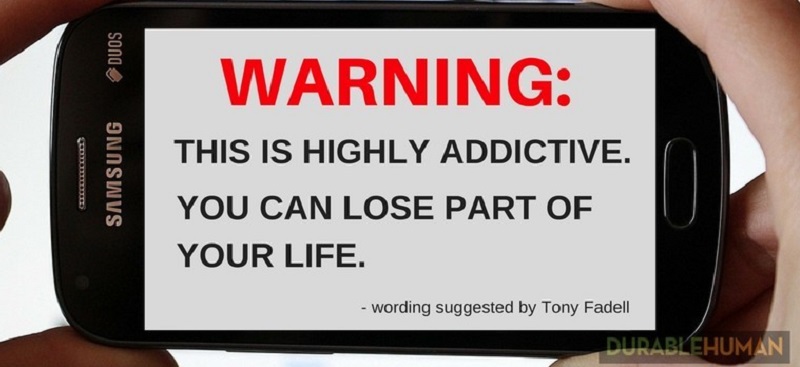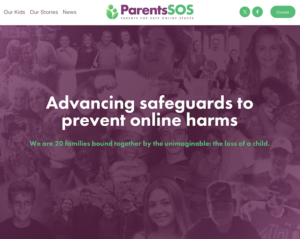Guest Blog by Jenifer Joy Madden.
“Ban Russian Bots.” The words shone brightly projected across Twitter headquarters. Not long after, a listener of NPR’s 1a wrote: “Wish there was a national movement, like a Quit Facebook day. If they lost a million plus U.S. users in 1 day, it would give reformers inside the company the momentum they need.” Then came the medical community. At a research summit on how technology affects kids, a health policy expert issued a call to action: “Urge companies to first Do No Harm.”
It’s happening. People are finally realizing technology doesn’t always operate in our best interests and they’re doing something about it.
“Facebook builds in operant conditioning and wants you to use it ten hours a day,” declared Dr. Dimitri Christakis, Director of the Center for Child Health, Behavior and Development at Seattle Children’s Hospital. Also speaking at the research summit, the policy expert, Georgetown University’s Kathryn Montgomery, took it a step further: “Woven into the business model is not just engagement, but engagement for the purposes of advertising and data collection. They need to put a limit on the information that can be collected and the way information can be used to target individuals.”
Even Tony Fadell, who created the iPod and oversaw rollout of the iPhone, called out personal technology at the recent tech-in-perspective conference, Mindfulness in America: “These are all-consuming if we let them be. We need to wrest the control back to ourselves. Unintended consequences allow us to become addicted very quickly.”
Tristan Harris is a tech designer turned activist who worked at Google and trained in Stanford University’s Persuasive Technology Lab. He says the goal of most tech companies is to grab and keep our attention “in a race to the bottom of our brainstems to seduce our instincts.”
So how can you become a tech activist?
Take stock of your digital life
Start by being mindful of how you engage with your smartphone and other personal technology. Fadell thinks we deserve feedback. “We have zero data about our habits on these devices.” In Fadell”s view, every one of our TVs, phones and other personal devices should tell us our usage patterns. And if their makers don’t deliver that data, Fadell says, they should be regulated.
While that battle is fought, apps like Moment can track your smartphone usage.
The American Academy of Pediatrics helps families with the Media Time Calculator. Parents can use it to sit down with their kids and plan a 24-hour day to include all the activities they need to be healthy and balanced. The Calculator is pre-programmed with age-recommended time periods for sleep and exercise.
But you don’t need more technology to proactively manage your Self. For instance, if you find you’re in a vicious cycle of checking and rechecking your phone, unhand the device, then walk a flight of stairs or step outside and take a deep breath. Another idea: Rather than looking at Facebook continuously, choose a specific time to check.
You can do so much more to design a tech-in-perspective lifestyle once you’re more conscious of your digital actions.
Take Advantage of Your Spidey Sense
With the revelations of Facebook’s, Google’s and Twitter’s roles in the 2016 election, social media users are beginning to realize that the platforms’ algorithms tend to prioritize information that’s new and popular, but not necessarily correct. Users are also less naive about the platforms’ motives. As Fadell puts it, “You think on Facebook and Instagram you’re the customer? You’re not the customer. Coke is a customer of Facebook. They pay for it.”
Once you’re aware of your risk of being had, you can exercise healthy skepticism. It’s like when you stand in line at the grocery store. You know a looney tabloid headline when you see one. Use that same intuition when you read online. Notice if the post or news article has misspellings and odd syntax, which can be a good indicator sketchiness. If you can’t tell the source of the content, don’t share it. You may also want to check it out with Snopes.com, Factcheck.org, or Politifact.com.
Test your Fake News sniffing skills with Factitious, American University’s free online Tinder-format game (which does not collect personal data or run ads).
Don’t buy insecure or potentially damaging products
As is the case with social media, Internet-connected toys and listen-and-assist devices such as Google Home collect information, but don’t necessarily disclose the dossiers they build. Review the privacy settings and parental controls on these objects (usually best viewed online). If you’re not comfortable, don’t buy them. If you do purchase, set up security features and parental controls before use.
And just because a product is new, you don’t need to buy it. Prime example: the smartphone holder that clips on to a baby bottle. You know in your heart that babies need those few precious moments of eye contact much more than you need to look at your phone.
In any case you have concerns about a product, express them directly to the companies.
Push to prioritize human needs
Tristan Harris leads a form of tech activism called Time Well Spent. It’s like the organic food movement, he says, only for software. The intent is to put pressure on tech designers to stop using psychological and other tactics to commandeer our attention, but to instead use their talents to support how we want to spend our time. Join Tristan’s effort here.
Finally, although we and our kids are now steeped in digital everything, we still know precious little about the effects on our minds and bodies. Indeed, says Pam Hurst-Della Pietra, who organized the abovementioned Interdisciplinary Summit on Children and Screen Time, “If we viewed media as an environmental health issue, we’d be much farther along.”
These are a few of the many studies in a special supplement of Pediatrics magazine announced at the Summit:
- Digital Media, Anxiety, and Depression in Children
- Internet Gaming Disorder in Children and Adolescents
- Children’s Privacy in the Big Data Era
- Screen Media Exposure and Obesity in Children and Adolescents
- Small Screen Use and Driving Safety
- Digital Media and Sleep in Childhood and Adolescence
That this research is occurring is a great step forward. The problem is there is no central repository for any of it.
So that’s another job for tech activists: tell your members of Congress and the Director of the National Institutes of Health that – just like for the effects on us of noise and junk food – research findings on our technology exposure also need a home.
What other avenues do you see for tech activism?
###
DurableHuman.com founder Jenifer Joy Madden is a health journalist, digital media adjunct professor, and author of How To Be a Durable Human: Revive and Thrive in the Digital Age Through the Power of Self-Design. Her work has informed millions on news outlets including ABC News, The Washington Post, Readers Digest, Tech Republic, Thrive Global, and many others.




